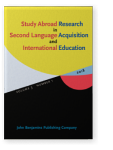Vol. 3:1 (2018) ► pp.32–57
Vol. 3:1 (2018) ► pp.32–57
Oral language development among Mandarin learners in Chinese homestays
This mixed-method study describes the oral Mandarin development of 25 American students living in Chinese homestays, and how it may relate to the ways they respond to opportunities for interaction with their host families. While scholars have begun to examine students’ Mandarin development during their sojourns in China, there is little research regarding changes in their holistic oral proficiency and how such changes may be related to the quality of interaction they have with their interlocutors. The results of this study show robust gains in proficiency ratings of their oral performances over the course of one semester. A case study of two purposefully selected student performances – one who demonstrated the most prominent proficiency gains and the other who showed no gains – reveals differences in the ways they respond to opportunities for interaction. These findings provide suggestions on ways to best facilitate students’ learning experience while living with host families.
Article outline
- 1.Introduction
- 2.Literature review
- 2.1Oral proficiency development among study abroad students
- 2.2Quality of interaction within the homestay setting
- 2.3Linking the everyday with the proficiency measures
- 3.Methods
- 3.1Participants
- 3.2Procedures
- Simulated Oral Proficiency Interview (SOPI)
- Recorded student-host family conversations
- Student surveys
- 4.Analysis
- Proficiency of the sample
- Case analysis
- 5.Findings
- 5.1Oral proficiency changes
- 5.2Case analysis: Vocabulary
- 5.3Case analysis: Topic management
- 6.Discussion
- 7.Pedagogical implications
- Acknowledgements
-
References
